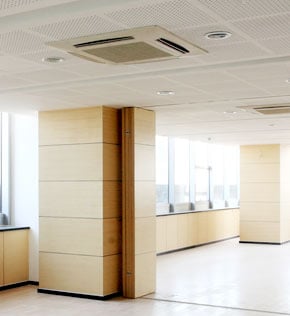HVAC is the commonly used abbreviation for Heating, Ventilation and Air Conditioning systems within buildings. Heating can be considered to be heating or cooling.
HVAC system design uses the principles of:
Thermodynamics
Thermodynamics is the science of heat and temperature and their relationship to energy and work;
Fluid Mechanics
Fluid Mechanics relates to dynamics of fluid in motion, ie a pumped water system;
Heat Transfer
Heat transfer relates to the movement of energy in the form of heat, between two systems, ie water supplied by a boiler to air circulated by a Fan Unit. Heat transfer ‘obeys’ the Laws of Thermodynamics.
HVAC systems are used to provide thermal comfort and indoor air quality to create an acceptable working / living environment.

The individual functions are
Heating
The use of heating or cooling to control environmental (room) space;
Ventilation
The process of changing or replacing air in a space. It is used to remove moisture, odours, heat, carbon dioxide etc and replace with ‘fresh air’. It is considered to be one of the most important factors for good indoor air quality. The design process would specify a number of ‘air changes’ within a room, depending on usage;
Air Conditioning
The supply air is ‘conditioned’ to control the temperature and humidity. Humans like a room temperature of 18 – 23°C and a relative humidity of 30 – 70%. ‘Relative’ humidity is a measure of humidity compared to the maximum possible humidity.